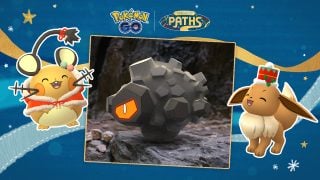We’re so close! The release of Pokémon Sword and Shield is just two days away, meaning Pokémon fans the world over will finally be able to enjoy a full-blown Pocket Monsters experience on their Nintendo Switches. Although the fan community’s reaction to these games has been very mixed, we know there are plenty out there ready to Power-Up Punch through the masses to get their hands on these games. I (and the rest of the Nintendo Wire team) wanted to lead up to the games’ launches by looking back at each generation of Pokémon games: their strengths, their weaknesses, what they brought to the series, and even what they took away.
Yesterday, we looked back on Pokémon Generation V; on Monday, we revisited Pokémon Generation IV; on Sunday, we reminisced about Generation III; on Saturday, we thought fondly about Pokémon Generation II; and on Friday, we did Generation I. Let’s continue on with Day Six of the Sword-and-Shield countdown by looking back at Generation VI: Pokémon X, Y, Omega Ruby, and Alpha Sapphire.
Your adventure begins now! You are about to enter the beautiful Kalos region!
In the Fall of 2013, I was just starting my third year of college, I had gotten a promotion at my part time pizza job, and even picked up a second, really cool job as the music director at my college’s radio station. Despite all of this frankly “grown-up” sounding stuff going on in my life, the thing I was most excited about was more Pokémon. Pokémon X and Y had been on my radar the entire year, being the first mainline Pokémon titles to hit the Nintendo 3DS. The fact that these would be the first main titles to entirely ditch 2D sprites in favor of 3D models was a huge deal to me, not to mention the introduction of our first new Pokémon type since Generation II. Pokémon X and Y are looked down upon by a lot of Pokémon players, but I’ve played through it at least five times in the last six years, and I don’t regret a second of it.
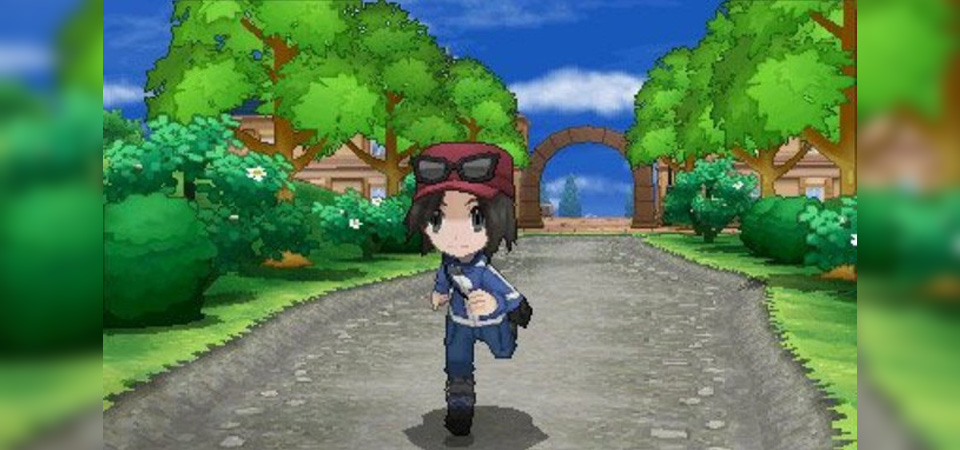
I still look back on the launch of Pokémon X and Y very nostalgically — I’ll never forget choosing Froakie as my starter or running into and catching my first Scatterbug, wondering which Vivillon pattern would represent my region (it was High Plains). Early on I found a Shiny Pancham that would accompany me throughout my journey in Kalos, and the other mainstays on my team, Hawlucha, Goodra, and Heliolisk, remain some of my favorites from Gen VI to this day.
Kalos, as a region, gets a lot of grief from the Pokémon fanbase as a whole, but to me the whole region is wonderful and vibrant. Exploring a Pokémon world in full 3D was something I’d always dreamed of and Kalos didn’t disappoint me. I was instantly enamored with the seaside cliffs near Ambrette Town and Cyllage City, Laverre City, surrounded by swamps to the south and golden-leafed paths to the east, and the grand and bustling Lumiose City, and I still look back on all of Kalos’s locales very fondly. A lot of people take issue with the fact that Lumiose is billed as Kalos’s central hub while it takes so much time to fully open up, and I can’t say I blame them — the in-game excuses given for the closure of parts of the city are pretty thin.
Youth may be beautiful, but it’s not all there is to life. Everything changes. I want to live and change like that, too.
There are plenty of things that Gen VI introduced to the series that I ended up adoring, first among them is the ability to customize your trainer’s look, down to their hair style and eye-color. The rotating selection of clothing items at the game’s boutiques seemed endless for awhile, though it ended up feeling like female trainers got way more (and way cuter) options. I loved finding a new boutique in a new town and browsing through their selection, mixing and matching the styles to really make my trainer feel unique, plus the Boutique soundtrack is an absolute jam.
One addition to the series that I unexpectedly fell in love with was Pokémon X and Y’s Wonder Trade feature. The ability to send a Pokémon out into the void and get a random Pokémon back from another player was endlessly entertaining for me; I would spend hours upon hours Wonder Trading my heart out while watching TV or a movie, cycling Pokémon through to fill Pokédex entries until I got something appealing or interesting. After finishing the main story of Pokémon X, I went out and bought a copy of Pokémon Y for the sole purpose of a Wonderlocke run, Wonder Trading away the first Pokémon I caught in each route, and allowing myself to only use the Pokémon I got in return for these Wonder Trades for the duration of the game. Oh, and if a Pokémon fainted during battle, that was it, it was thrown into a PC box and essentially dead to me for the rest of the playthrough. Wonder Trade is one feature I’ve really come to love in the last few generations of Pokémon, and I’m very happy to see it returning, albeit under the Surprise Trade moniker, in Pokémon Sword and Shield.
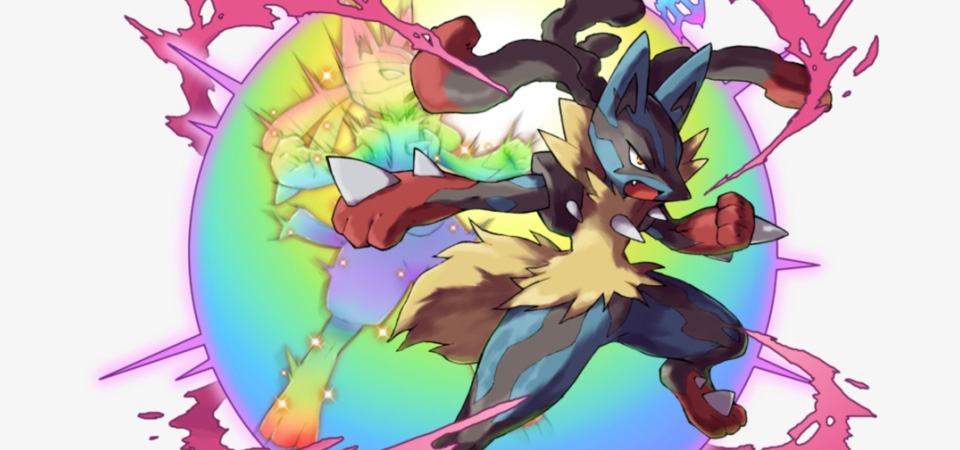
The last thing that Pokémon X and Y introduced that I ended up loving is actually something that I hated the thought of when it was first announced: Mega Evolutions. The first major, somewhat gimmicky shake-up of the standard battle formula, Mega Evolutions allowed certain Pokémon to push past their limits, thanks to their bond with their trainer, in order to become a new, more powerful form. Introduced in two waves, there are 28 Mega Evolutions in Pokémon X and Y, while Pokémon Omega Ruby and Alpha Sapphire introduced another 20. While my initial reaction to Mega Evolutions was negative, I came around to loving the idea pretty quickly, since, you know, Mega Mawile is pretty rad. Despite still being available in Pokémon Sun and Moon, no new Mega Evolutions were introduced for Gen VII, instead being replaced by the just-as-gimmicky, if not more-gimmicky, Z-Moves — though both will soon be completely removed in favor of Dynamax and Gigantamax Pokémon in Gen VIII.
Aside from all that, the sixth generation of Pokémon games also introduced 72 new Pokémon, 62 new moves, 27 new Abilities, a navigable eight-dimension grid (as opposed to the four-directional one seen in all past Pokémon games), “Sky Battles,” “Horde Encounters,” “Inverse Battles,” and “Super Training.” Pokémon Bank was also introduced in Gen VI, which was a separate Nintendo 3DS application that, with the cost of a $5 USD annual fee, allowed players to store up to 3,000 Pokémon in the cloud. Perhaps the biggest change of all was the new “Fairy” Type, added to balance out the existing Dragon, Poison, and Steel Types. 22 different past Pokémon received either a primary Fairy re-Typing or secondary re-Typing, including Clefairy, Snubbull, Jigglypuff, Ralts, and Cottonee.
Pokémon Omega Ruby and Alpha Sapphire also introduced “Primal Reversion” for its Box Legendaries, Trainer horde battles, “Mirage spots,” “Soaring,” four new moves and three new Abilities, plus the re-introduction of Pokémon Contests and Secret Bases.
Despite all the additions Gen VI provided the series, it also took many features away. Badges are once again required to use HM field moves and dark grass (introduced in Gen V), the Pokémon Musical, the Pokémon World Tournament, seasons, “<player name>’s PC,” and footprints in the Pokédex were all removed. Most shocking of all: Gen VI removed the word “Version” from its Western-language game titles. Instead of Pokémon X Version and Y Version, the games are simply called “Pokémon X and Y.” This remains the norm for all games following, too.
The only way to create a world where people live in beauty, a world without conflict or theft, is to reduce the number of living things.
I think the biggest aspect of Pokémon X and Y that suffered is also the same aspect that players were severely disappointed with, the story. Kalos’s resident “evil team” is Team Flare, a villainous team who performs nefarious acts in order to make the world more… beautiful? No wait, they want more… money? Wait, wait, wait… oh, it’s both.
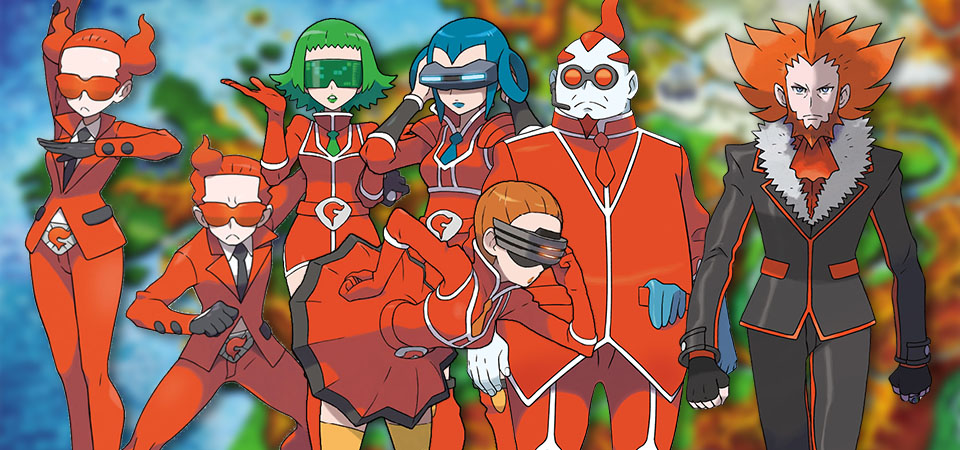
Team Flare’s big, evil plan is to make the world more beautiful while making themselves richer by uhh, killing everyone else. As much as I loved this generation, this barely makes any sense on it’s own, let alone when compared with the grand schemes of Gen III’s teams of geological terrorists or Gen V’s villainous team tackling complex moral arguments regarding truth and ideals. At least Lysandre’s battle theme is catchy, I guess?
On top of this, so many story elements of Gen VI were simply underutilized. For example, a member of Kalos’s Elite Four is also a member of Team Flare. Is this ever actually touched upon in any meaningful capacity? Of course not. Not to mention AZ, the mysterious giant who apparently built Team Flare’s massive murder-weapon 3,000 years ago. We get some AZ backstory, sure, but it takes a backseat to the genocidal maniacs in fashionable orange suits.
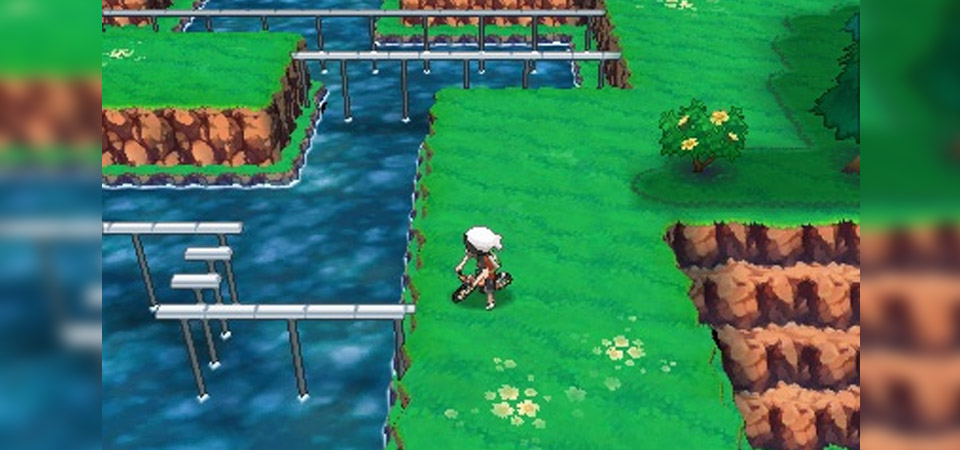
I can’t really talk about Gen VI without mentioning Omega Ruby and Alpha Sapphire, the Gen III remakes. They were fun games, and it was a blast to see Hoenn in 3D for the first time, but as far as remakes go, they were disappointing. As mentioned by my coworker Daniel in his Gen III look back, Omega Ruby and Alpha Sapphire were based on Ruby and Sapphire, rather than Emerald, meaning that a lot of what made players fall in love with Gen III was left out, including the Battle Frontier. Despite this, ORAS did do one thing very, very right: More Mega Evolutions. I mean, how could I say no to Mega Pidgeot, a vast improvement over its base form? Mega Slowbro? Just absurd enough to be loveable. Mega Sableye? The world’s best little gem gremlin.
Tomorrow is the only thing that comes to you even if you don’t do anything. Everything else in life has to be fought for, so go out and get what you want!
Thanks to my love of this generation and the hundreds of hours I spent playing it, Pokémon X was where a lot of my Pokémon from over the years ended up residing, thanks to Pokémon Bank. Sadly, my mom’s dog chewed up my copy of Pokémon X a few years ago, before I had the chance to load all my beloved Pokémon back into Pokémon Bank. Ironically enough, I was in the middle of going through my Pokémon games when it happened, hoping to store everything important to me later that day. Instead, most of my Pokémon from Kalos, including my trusty Mega Mawile and my complete collection of Vivillon patterns, along with many of the Pokémon from my childhood copies of Ruby and Sapphire, my wonderful team from Pokémon Platinum, and many, many others are simply gone, lost to the void of a mangled game card. Still, I have that copy of Pokémon Y that I still boot up from time-to-time — it has a few playthroughs under its belt now — and the nostalgia of my first fully 3D Pokémon adventure hits me all the same.
What’re your thoughts on Pokémon Generation VI? Let us know in the comments and be sure to catch us tomorrow for our final retrospective — on Generation VII!
Leave a Comment

